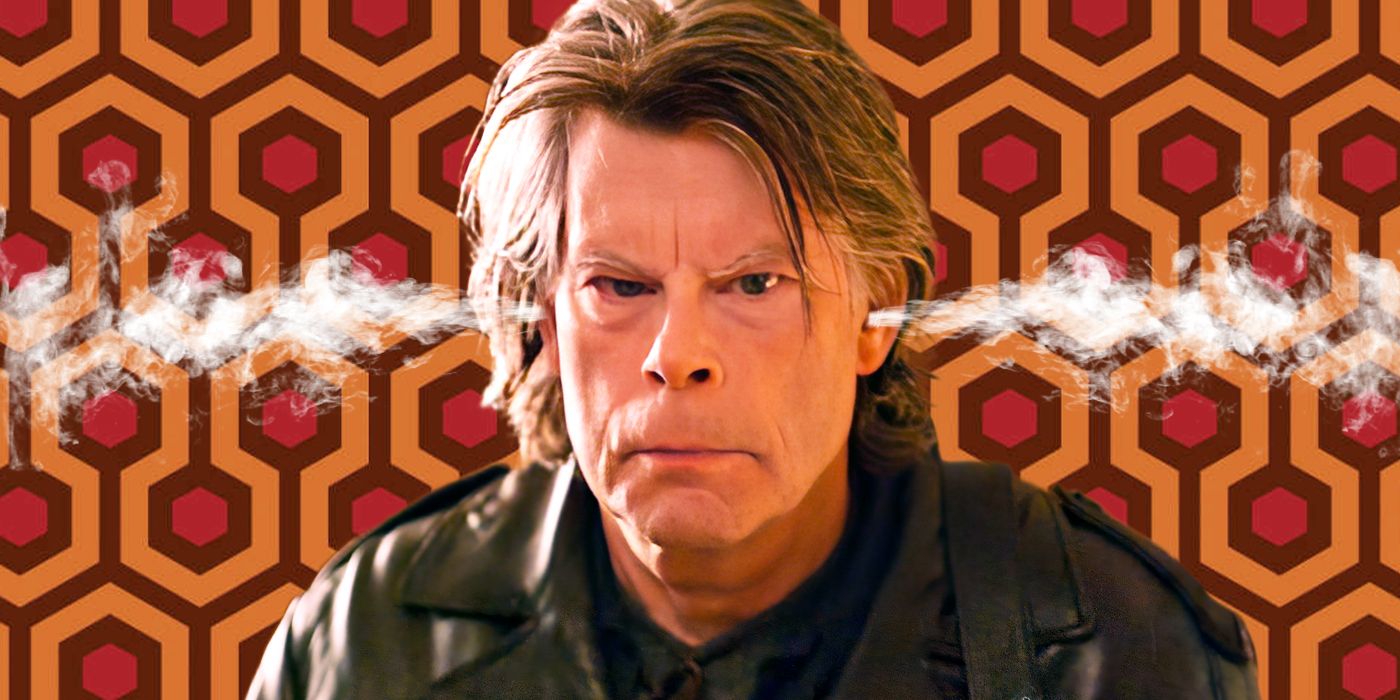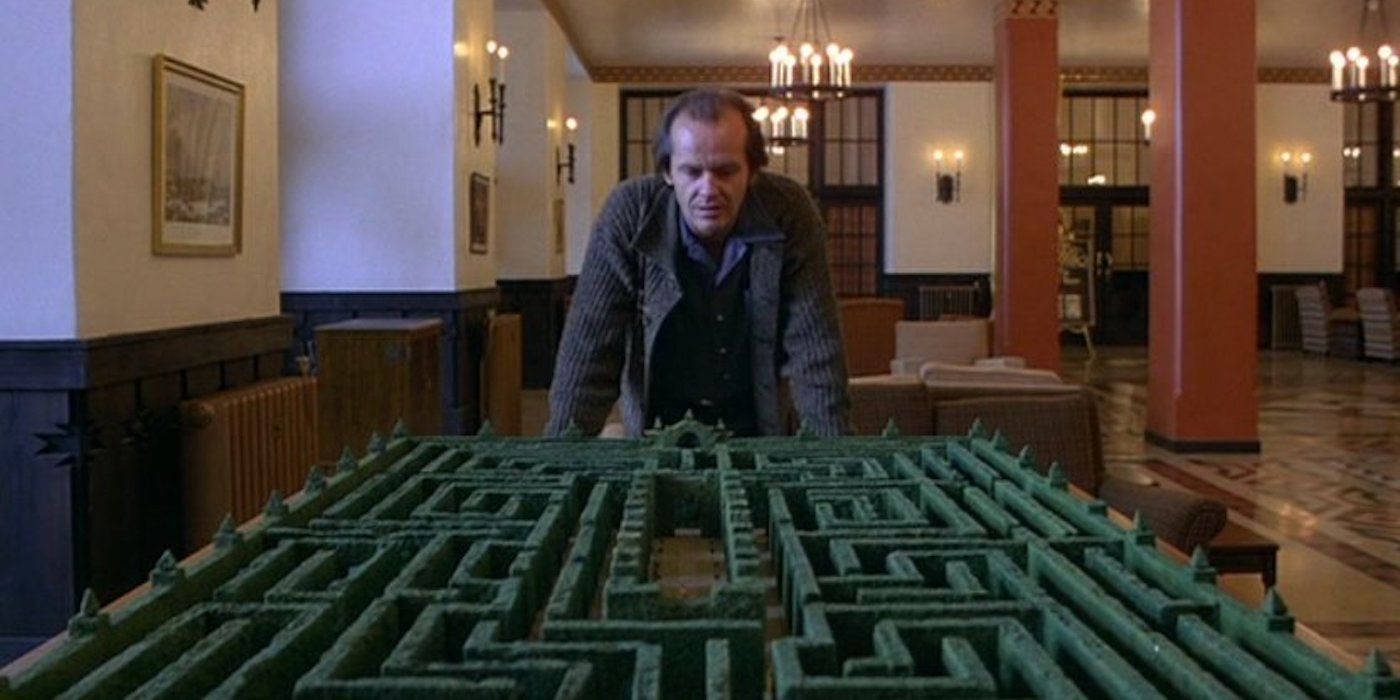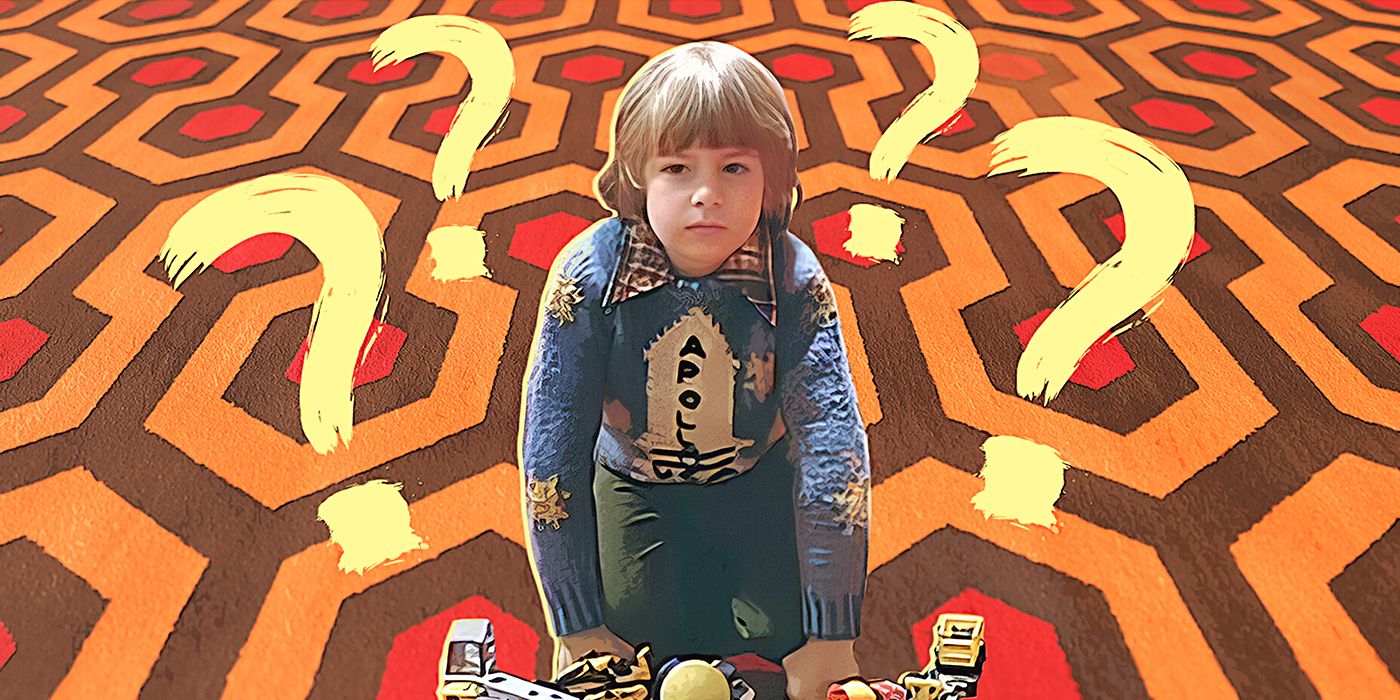The Big Picture
- Room 237 is a documentary that explores the hidden meanings in Stanley Kubrick’s film adaptation of The Shining, but it goes too far in trying to “solve” the movie’s mysteries.
- The film and novel versions of The Shining thrive on ambiguity, but Room 237 aims to uncover every secret and question that Kubrick and King intended to leave unanswered.
- While Room 237 offers fascinating theories and ideas, it’s important not to take them too seriously and to embrace the open-ended nature of storytelling.
We all know that Stephen King hates the 1980 movie adaptation of The Shining, but there’s one thing that he hates more than what Stanley Kubrick did to his novel and that’s the documentary Room 237. The 2012 doc, which speculates on The Shining‘s hidden meanings, is one of the most fascinating examples of the strange places fandom can lead. The Shining novel and film are both tales that work because of their deep sense of ambiguity. Room 237, on the other hand, aims to read between every single line and “solve” its mysteries. You can’t say the doc isn’t filled with fascinating ideas and theories, but completely buying into everything that its filmmakers put out there is a different story. Regardless, Room 237 is here to dismantle everything that King and Kubrick aimed to leave terrifyingly vague.
King’s original novel of The Shining derives a lot of its terror from the idea that we don’t really know what’s going on with the Overlook Hotel. The book terrified readers upon release and has continued to for decades now, with many hailing it as the author’s masterpiece. If you thought the book was ambiguously eerie, then you haven’t seen anything yet. Stanley Kubrick’s 1980 film adaptation is one of the most alienating movies ever made, and purposefully so. There’s something off in that the Overlook Hotel and its inhabitants have an otherworldly feel. The performances from Jack Nicholson, Shelly Duvall, and the other members of the cast are all stretched to odd ends after endless takes of every shot. Everything is filmed with an odd amount of space and timing, leading every corner of the Hotel to seem as though it’s hiding secrets that go beyond the narrative. Kubrick’s infamous deviations from the novel also beg questions to be answered, beyond the obvious character and plot choices like the hotel freezing instead of burning. You might wonder about the odd filmmaking and writing choices in both versions of The Shining, but believe me — no one wonders about these things more than the people featured in Room 237.
What Exactly Is ‘Room 237’?
Named after the movie’s haunted fictional hotel room, Room 237 is a documentary that aims to uncover the secrets found in every odd end of The Shining. In doing so, documentary filmmaker Rodney Ascher brought in multiple people to share ideas that they have developed surrounding Kubrick’s film. It seems that Ascher aimed to match The Shining’s odd tone, so Room 237 delivers all of its concepts via voiceover. This alone gives the movie a bit of an otherworldly feeling, like an Overlook Hotel ghost is letting you in on all of Kubrick’s secrets.
The result is a fascinating, if reaching, smorgasbord of theories and speculative ideas. Room 237 is undeniably both gripping and, at times, kind of hilarious. It’s not that any of the hypotheses at play are completely unbelievable; they’re actually backed with some pretty impressive bits of “evidence” and serious thought put into them. Believe them if you want, or simply marvel at the feats of brainpower at work here. Room 237 might be taking things about The Shining to the extreme, but it’s not worth hating. It’s a good bit of conspiratorial fun!
Room 237’s theories come at The Shining from a pretty wide variety of angles. There’s a large chunk of the movie that is devoted to the theory that Kubrick attempted to admit to the world that he filmed the staged Apollo 11 Moon landing. The evidence at hand includes Danny’s (Danny Lloyd) knit sweater that depicts this very Moon landing, the fact that the number 237 (changed from the 217 King used in the book) measures the distance between the Earth and the Moon, and that the carpet pattern in the Overlook looks like the Apollo launching pad.
Then, there’s the proposition that The Shining parallels the many ways that the Europeans wronged Native Americans. To back this up, it is said that the Overlook was built on top of a Native American burial ground, and loads of Native American-related imagery that are seen in the film are brought into question. There are many more theories found in Room 237, including one on the legendary Minotaur creatures, another about Kubrick’s failed film production about the Holocaust, Aryan Papers, and even little bits to do with another highly speculated film, Eyes Wide Shut. Come on, you have to admit this kind of off-the-rails theorizing sounds like a little bit of fun!
Stephen King Turned Off ‘Room 237’
Stephen King, however, didn’t agree. In a 2014 interview with Rolling Stone, King stated, “Let me put it this way – I watched about half of it and got sort of impatient with it and turned it off.” When asked why, he elaborated with, “These guys were reaching. I’ve never had much patience for academic bullshit. It’s like (Bob) Dylan says, ‘You give people a lot of knives and forks, they’ve gotta cut something.’ And that was what was going on in that movie.” It’s safe to say that King didn’t just think that the folks behind this movie were reaching, they straight-up rubbed him the wrong way.
Kubrick’s adaptation of King’s novel was already hard enough for the famous author to sit through. The film made Jack Torrance (Nicholson) an irredeemable psychopath, froze the Overlook, and went the opposite way of any notes that the original author had. King disliked the 1980 film so much that, in 1997, he produced and wrote his own made-for-TV Shining miniseries. That version didn’t turn out so great, likely furthering his disdain for the Kubrick’s acclaimed movie even more. So when you have a documentary that is even more interested in Kubrick’s vision of the Torrance story, then picks it apart to the bone to find meaning in things that were meant to be left up to interpretation, you can see why King was left in a sour mood.
When It Comes to Storytelling, Ambiguity Is a Good Thing
Most of us live removed from the creative process of anything Shining-related. We didn’t have a hand in the book, the movie, the miniseries, or even Room 237. We can’t have any definitive take on what the events, images, and hidden themes of The Shining are, and that’s the beauty of it. Room 237 should be viewed as a way to open your mind to potential answers to the questions that we’ve all been asking for decades now, but not sure-fire answers. When people try to assign true meaning to artistic creations that were intended to be left up to individual audience members and readers, it completely takes away the point of the art at hand.
This is why David Lynch doesn’t want to answer any questions about what his movies mean, or why Christopher Nolan has never provided a guaranteed response about the spinning top at the end of Inception. Speculating and creating conversation around these things is a blast, and that’s what Room 237 aims to do. But when you try to claim that “this is what this means” or “this is the message that this filmmaker was conveying when they were making this movie,” then discourse and imagination are cut off entirely. Storytellers don’t always want the audience to know everything that’s going on; they want to make you just as much of a part of the process.
Have fun with Room 237, but don’t take any of it too literally. It should be consumed in the same way that you sit around with friends occasionally and share funny and intriguing conspiracies that you’ve read on the Internet or are passing along from someone else. When you love something with as many open ends as The Shining, you can’t help but let your mind run wild. And you should let it. After all, there are many secrets to be found inside the Overlook. (Maybe just don’t tell Stephen King about it, though.)






